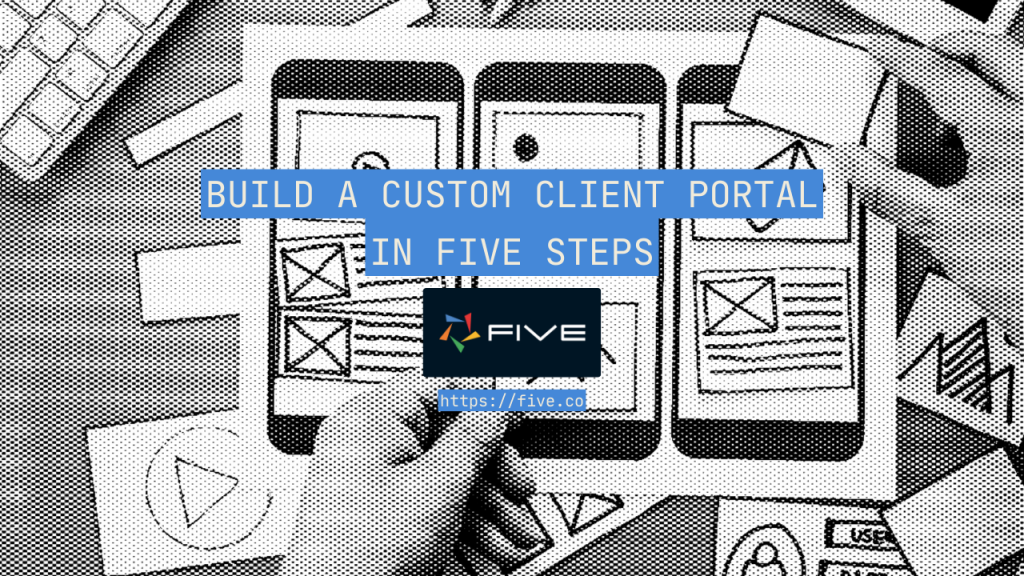How to Build a Custom Client Portal In Five Steps
 Dominik Keller
Dominik Keller
Effective interactions with clients are critical for every business. In today's world, clients want access to the right information if and when needed, at any time and from anywhere. This is where software can help: by building a custom client portal, businesses can streamline client interactions, provide information, and share documents. Designed to be self-service portals, these custom portals give clients access to information, provide resources, or visualize important performance data that clients can access on-demand.
In this blog post, you will learn how to rapidly develop dedicated portals and business apps for customers, clients, vendors, and partners.
Develop and Deploy a Custom Client Portal
Build dedicated portals for vendors, partners and clients
Building a Custom Client Portal
What are the Typical Features of Custom Client Portals?
Custom client portals provide clients with access to important information regarding the business relationship, such as a history of past orders, open and paid invoices, upcoming campaigns, or available services. They also have important self-service capabilities, such as updating or maintaining contact information or sharing documents, which help reduce the manual work involved in maintaining client relationships.
Client portals are an important part of effective account management and can help ease the burden on team members, as they reduce the need for client interactions by email, on the phone, or through face-to-face meetings.
Custom client portals are a great tool for small- and medium-sized businesses that don't have the human resources to follow up on every client request ("Could you re-send last month's invoice please?"), but would rather enable clients to request and maintain information through a self-service web application.
Developing a Custom Client Portal
Luckily, modern rapid application development environments, such as Five, make it easy to go from idea to production-ready and secure client portals. These customer portal builders give access to the right features to create a web interface for customers in just a few days.
To develop a custom client portal, follow these five steps:
Collect Relevant Information, Data, and Documents: first, ask what information and documents clients need to access on a regular and recurring basis. Compile a list of the top 5 pieces of information and documents. If you are unsure what these information and documents are, ask your account managers: they will be able to tell you what consumes most of their time when dealing with clients.
List Out Manual Client Interactions: it is also helpful to ask your account managers (or even your clients) what other manual interactions are suitable for automation or self-service. List out these interactions and draw up ways to automate them through a self-service client portal.
Choose an Effective User Interface: client portals, especially for B2B businesses, frequently use an admin panel as their layout and user interface. Through its clean and professional design, the admin panel lets your clients easily navigate the portal. This is important, as there is no need to reinvent the wheel: the admin panel provides a tried-and-tested user interface suitable for custom client portals.
Develop the Client Portal: once the scope of your custom client portal is well-defined and the mock-ups are ready, it's time to start developing. Client portal builders, such as Five, turn the process of translating your requirements into working software easy, fast, and efficient.
Customize the Client Portal and Apply Your Branding: well-designed client portals are an important part of doing business. A custom client portal can be branded by applying your corporate colors, and logos or through a custom domain, theme, and branded signup and login pages.
What Does a Custom Client Portal Do?
Typical interactions and features that are suitable for inclusion in a client portal are:
Billing and payments: automatically create invoices, and let clients access invoices online through the portal.
Project management: update clients about timelines, deliverables, and tasks online to facilitate project management and progress reporting.
Document management: collect and give access to important business documents through a login-protected, secure client portal to minimize time spent on searching, sharing or accessing important documents.
Account management: give clients the ability to update and maintain important contact information through a self-service portal.
Client onboarding: invite new clients to your business through a well-designed and smooth onboarding process with a clearly defined onboarding process that takes place online.
Support & Resources: furnish important information about your business and how you can support your clients online in a resource hub.
Client Communication: communicate with clients through your portal and keep a secure audit trail of all communication between you and your clients.
Purchasing: collect client orders online and provide live updates about available products, delivery times, and order fulfillment.
Using Five to Develop a Client Portal
Five is a rapid application development environment suitable for building custom client portals.
Five can securely manage your data by providing out-of-the-box user management and provide a clean, auto-generated user interface for your client's data. It also provides the ability to setup automatic notifications, manage documents, or brand your custom client portal. To learn more, sign up for a free trial.
Subscribe to my newsletter
Read articles from Dominik Keller directly inside your inbox. Subscribe to the newsletter, and don't miss out.
Written by

Dominik Keller
Dominik Keller
Co-Founder of Five, a low-code startup from Brisbane, Australia.